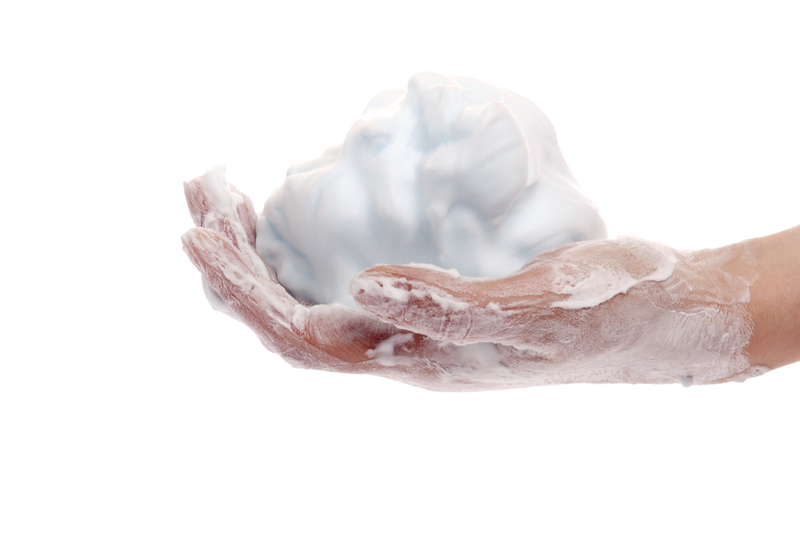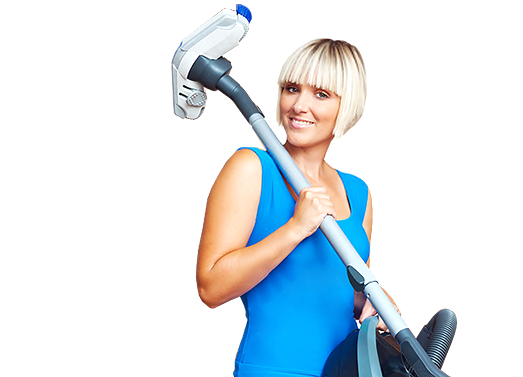Analyzing the Impact of Steam on Leather Sofas
Posted on 23/06/2025
Leather sofas epitomize style, comfort, and luxury, making them a prized possession in many living spaces. However, their care and maintenance are a topic of ongoing discussion, especially regarding the use of steam cleaning methods. In this article, we delve deep into the impact of steam on leather sofas, exploring both the benefits and drawbacks, expert tips, and sustainable alternatives to help you make an informed decision for your cherished furniture.
Understanding Leather Sofas: Composition and Vulnerabilities
Before investigating how steam affects leather sofas, it's crucial to grasp what makes up a leather sofa and why its unique characteristics demand tailored maintenance. Leather is a natural material, derived from animal hide and treated through various processes to give it durability, texture, and color. The types of leather commonly used in sofas include:
- Full-grain leather: The highest quality, retaining all the natural grain and offering robust durability.
- Top-grain leather: Slightly buffed to remove imperfections, smoother and more uniform than full-grain leather.
- Corrected-grain leather: Heavily processed, with artificial grain and color applied to enhance uniformity.
- Bonded leather: Made from leather scraps and fibers bonded together, less durable and more affordable.
Leather's porous nature means it can absorb moisture, oils, and other substances, making it sensitive to certain cleaning techniques, especially those involving heat and water.

The Science Behind Steam Cleaning
Steam cleaning is a popular method for cleaning various types of household surfaces and furniture due to its efficacy in removing dirt, germs, and allergens. It uses hot vaporized water delivered through a nozzle under pressure to loosen and lift dirt from surfaces. While this technique is effective for fabrics and hard surfaces, its impact on natural materials like leather requires careful consideration.
How Does Steam Interact with Leather?
Steam cleaning introduces three key elements that may affect leather:
- Heat: High temperatures from steam can cause leather to dry out, leading to cracking and loss of suppleness over time.
- Moisture: Excessive moisture can penetrate the pores of leather, promoting mold, mildew, and potentially altering the color or finish.
- Pressure: The forceful application of steam may disrupt the natural oils in the leather, diminishing its luster and resilience.
Understanding these interactions is essential to properly analyze the impact of steam on leather sofas and determine whether steam is a friend or foe to your furniture.
Positive Effects: Can Steam Cleaning Benefit Leather Sofas?
1. Sanitization and Allergen Removal
Steam cleaning leather sofas can effectively eliminate surface dust mites, bacteria, and allergens without using harsh chemicals. This makes it an eco-friendly method for sanitizing furniture and promoting a healthier home environment.
2. Gentle Surface Cleaning
When performed correctly and cautiously, steam can help loosen dried-on dirt and mild stains on finished and well-sealed leather surfaces, making it easier to wipe them away with a soft cloth.
3. Chemical-Free Process
People with sensitivities to cleaning chemicals may favor steam cleaning leather sofas as it relies solely on water vapor, reducing the risk of respiratory issues or skin irritation caused by residual cleaning agents.
Potential Risks: Negative Impact of Steam on Leather Sofas
1. Drying and Brittleness
Perhaps the biggest risk of steam cleaning leather sofas is excessive drying. Leather's suppleness relies on natural oils within the hide. Prolonged or improper exposure to steam can strip away these oils, causing the leather to become brittle and prone to cracks.
2. Staining and Discoloration
High heat and moisture from steam may result in water stains, color loss, or patches of discoloration, especially on lightly-colored or aniline-finished leather. This damage is often irreversible, detracting from the sofa's appearance and value.
3. Warping and Peeling
Continuous steam exposure can cause leather to warp or the finish to peel, particularly on low-quality or bonded leather sofas. This compromises both the structural integrity and aesthetic of the furniture.
4. Promoting Mold and Mildew
If moisture from steam is not fully removed from the leather surface (or worse, penetrates deeply), it can create an ideal environment for mold and mildew growth--both of which can ruin leather beyond repair and pose health risks.
Expert Opinions: What Do Professionals Say About Steam Cleaning Leather?
Professional furniture cleaners and leather care experts generally advise caution when using steam on leather surfaces. Many recommend alternative cleaning methods or reserved, highly controlled steam use by trained professionals. Key points include:
- Always consult the manufacturer's guidelines for your specific sofa model.
- Test any cleaning method, including steam, on an inconspicuous area first.
- Never use steam on unprotected, absorbent, or aniline-dyed leather sofas.
- Finish with a leather conditioner to replenish oils if limited, professional steam cleaning is performed.
- Consider hiring a leather care specialist for restoration or deep cleaning needs.
Best Practices: Safe Steam Cleaning for Leather Sofas
1. Assess the Type of Leather
Before attempting any steam treatment, determine whether your sofa is made of finished (protected) or unfinished (aniline) leather. Only well-sealed, finished leather can withstand very light, controlled steam cleaning.
2. Use Minimal Steam and Distance
Utilize the lowest steam setting and hold the nozzle at least several inches away from the sofa's surface. Work in small sections and limit the duration of exposure to reduce heat and moisture absorption.
3. Absorb Excess Moisture Immediately
After applying steam, gently blot any surface moisture using a clean, dry microfiber cloth. Never let water pool or remain on the leather for extended periods.
4. Condition, Condition, Condition!
After any cleaning involving moisture or heat, apply a high-quality leather conditioner to replenish oils and preserve the leather's flexibility and sheen.
5. Avoid Consumer-Grade Steam Cleaners
Most home steam machines lack the precise controls needed for safe leather care. Unless you have professional-level equipment and training, it's best to avoid steam cleaning leather sofas at home.
Non-Steam Cleaning Alternatives for Leather Sofas
Given the potential adverse impact of steam on leather couches and sofas, many experts recommend safer, alternative cleaning methods:
- Regular Dusting: Wipe surfaces with a soft, dry cloth weekly to prevent dust and debris buildup.
- Damp Cloth Wiping: Use a lightly dampened (not wet) cloth for gentle cleaning of grime or sticky spots.
- Specialized Leather Cleaners: Apply products formulated specifically for leather care, avoiding detergents or alcohol-based solutions.
- Leather Conditioning: Condition your sofa every 6-12 months to maintain its suppleness and prevent cracks.
- Immediate Stain Treatment: Blot spills right away and use appropriate stain removers for leather as needed.
Eco-Friendly Tips
You can maintain and refresh your leather sofa naturally by using solutions like mild soap flakes and distilled water (used sparingly), ensuring that moisture never saturates the hide.
Maintaining the Longevity of Leather Sofas: Proactive Care
To extend the life of your leather sofa and maintain its elegance, implement the following strategies:
- Keep away from direct sunlight and heat sources, which can dry out and fade leather.
- Maintain moderate humidity levels in your living space to prevent excessive moisture loss or buildup.
- Rotate cushions regularly to ensure even wear and aging.
- Use leather protectants or sealants to add an additional layer of defense against spills and stains.

Frequently Asked Questions: Steam Cleaning and Leather Sofas
Can steam cleaning completely ruin a leather sofa?
If performed improperly, steam cleaning can cause irreversible damage such as cracking, warping, and staining. However, with professional care and proper technique, some leather types can tolerate very light, controlled steaming.
Is there a difference between steam cleaning fabric and leather sofas?
Absolutely. Fabric sofas can often withstand higher levels of moisture and heat, while leather's natural composition makes it much more sensitive and vulnerable to steam.
What happens if my leather sofa was exposed to excess steam?
Act quickly by blotting away all moisture, allowing the sofa to air dry naturally (away from heat or sunlight), and conditioning the leather. If you notice cracking, discoloration, or mold, consult a professional leather care specialist.
The Final Word: Is Steam a Friend or Foe to Leather Sofas?
In summary, while steam cleaning offers certain advantages for general sanitization, the potential impact of steam on leather sofas is largely negative if not performed with utmost care. The risks of drying, cracking, peeling, and discoloration far outweigh the possible benefits, especially for high-value or finely finished pieces. As a rule of thumb, it's best to avoid steam as a cleaning method for most leather furniture and instead opt for specialized leather care products and gentle manual cleaning.
For those committed to preserving the beauty and longevity of their leather sofas, a combination of regular dusting, prompt spill management, and periodic conditioning remains the gold standard. Always err on the side of caution and consult with a professional when in doubt, ensuring your investment remains a centerpiece in your home for years to come.




